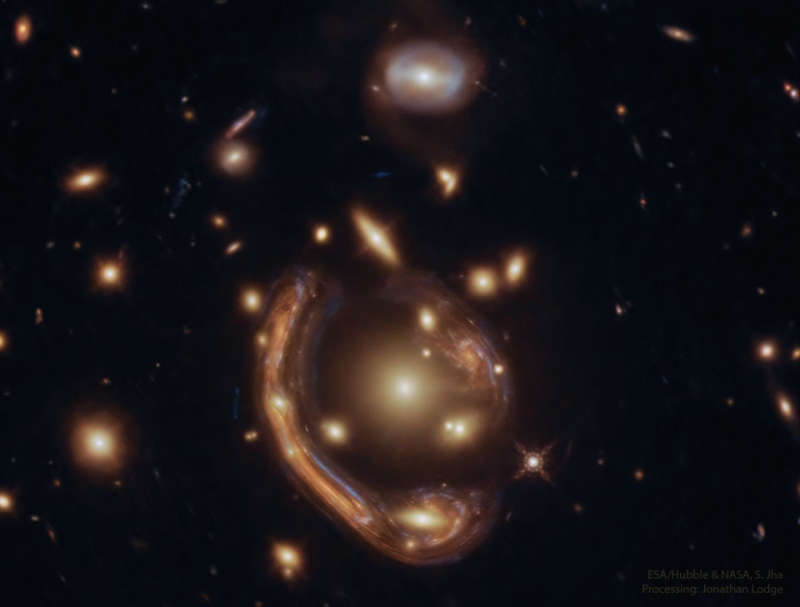A Molten Galaxy Einstein Ring Galaxy

Explanation:
It is difficult to hide a galaxy behind a cluster of galaxies.
The closer cluster's gravity will act like a
huge lens, pulling images of the
distant galaxy around the sides and
greatly distorting them.
This is just the case observed in the
featured image recently re-processed image from the
Hubble Space Telescope.
The cluster
GAL-CLUS-022058c is composed of many galaxies and is
lensing the image of a yellow-red background galaxy into
arcs seen around the image center.
Dubbed a molten
Einstein ring for its
unusual shape, four images of the same background galaxy
have been identified.
Typically, a foreground galaxy cluster
can only create such smooth arcs if most of its mass is
smoothly distributed -- and therefore not concentrated
in the cluster galaxies visible.
Analyzing the positions of these
gravitational arcs gives astronomers a method
to estimate the
dark matter distribution in galaxy clusters,
as well as infer when the stars in these early galaxies began to form.
New APOD Social Mirrors in Arabic:
On Facebook,
Instagram, and
Twitter
Authors & editors:
Robert Nemiroff
(MTU) &
Jerry Bonnell
(USRA)
NASA Web Site Statements, Warnings,
and Disclaimers
NASA Official: Jay Norris.
Specific
rights apply.
A service of:
LHEA at
NASA /
GSFC
& Michigan Tech. U.

